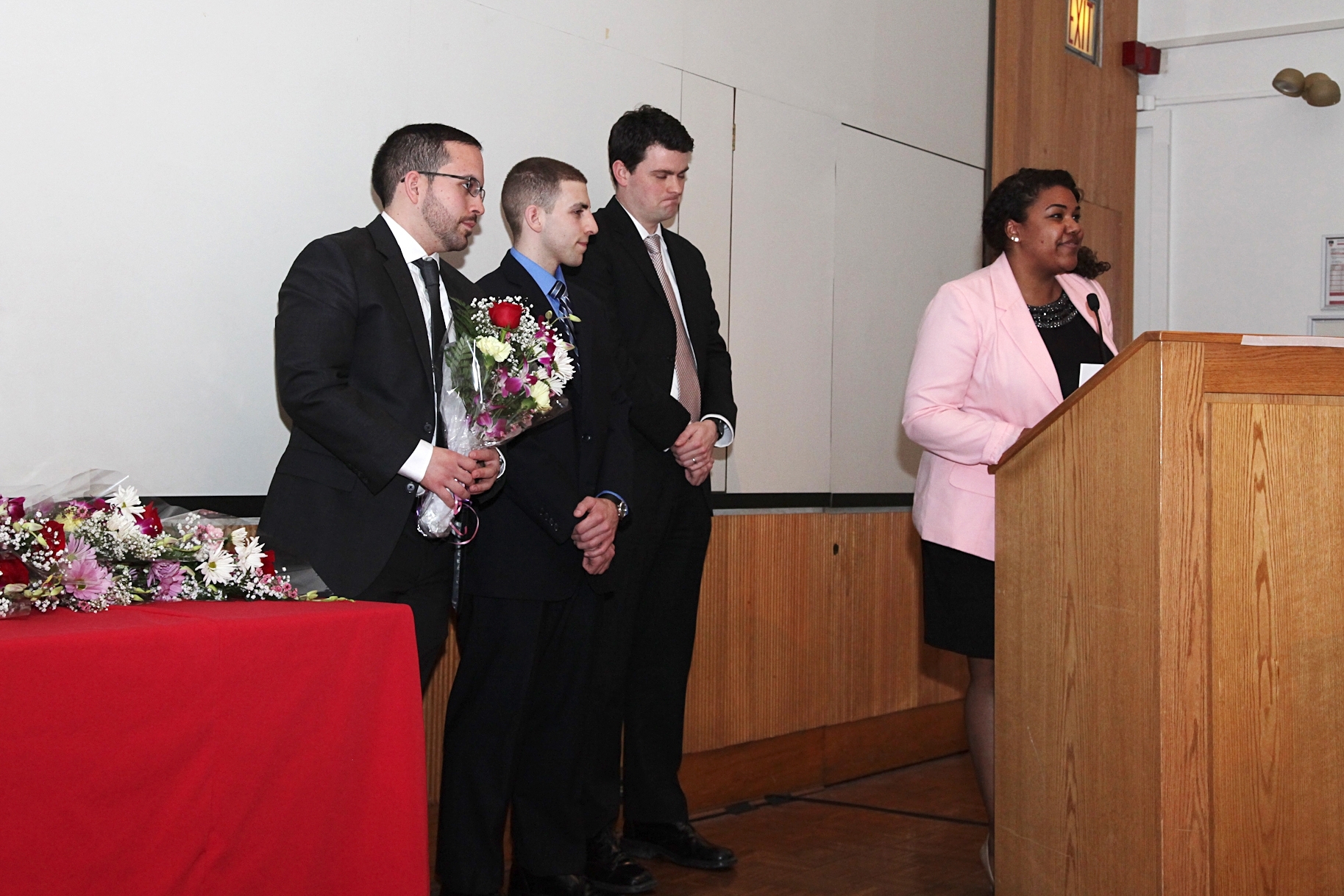
First-year student Jasmin Harpe honors those who bequeathed their bodies to science at the Gross Anatomy Memorial Service. From left, Dario Villamar, Salvatore D'Amato, Christopher Reisig and Harpe
No matter where Krupa Patel's medical career takes her, the first-year Weill Cornell Medical College student will never forget her experiences in the gross anatomy lab — and the person who taught her even after dying.
"In the future, when I listen to my patient's beating heart, the heart I will hear will be hers," Patel said at the Gross Anatomy Program's annual memorial service. "When I listen to their breathing, the lungs I imagine will be hers. The hands I hold will be hers.
"Your loved ones will remain alive through the patients we hope to serve," Patel added to family members who attended the event in Uris Auditorium on April 22.
Spiritual offerings and musical performances by first-years Ramya Tadipatri on the violin, Matthew Brown on the trumpet and a duet by Jaime Bernstein and Benjamin Scherban punctuated the service, offering some levity during an otherwise solemn occasion to honor those who bequeathed their bodies to science. Donors' families and friends — and even a future donor — watched as the students in the Class of 2017 expressed gratitude for their selflessness.
"Medicine is about lifelong learning, and no teacher is more important than our donors," said student Lewis Kerwin. "These teachers have given the totality of their physical existence to us. Thank you so much."
For many medical students, their first-year experiences in the gross anatomy lab are a turning point in their education. The 15-week program marks the first time when scientific concepts and textbook descriptions become real.
The 29 women and 11 men honored at the service came from all walks of life and included a dog trainer, business people, and a psychologist. Several served in the armed forces. Some lived into their golden years, but two—just 38 and 41 years old — died young.
"This ceremony reminds us that our very best teachers come in very different forms," said Dr. Carol Storey-Johnson, senior associate dean of education for Weill Cornell. "I consider our donors to be some of our very best teachers. And to our students, as you take the next steps to become outstanding future physicians, remember that you got there with the help, experience and guidance of teachers of all kinds."
No matter where they came from, they and their families have one thing in common: a shared commitment to furthering medical education.
"Institutions like ours thrive on these symbols of human good will," said Dr. Estomih Mtui, director of the gross anatomy program. "Our professors and physicians are well aware of the privilege of using the mortal remains of our fellow human beings. Our medical students acquire new and important knowledge, and know that many of our future patients will directly benefit from these unselfish gifts from our donors."
That's exactly why Lulu Lanese, 89, chose to donate her body to medicine more than 20 years ago. As a child in Hungary, Lanese had a near-death experience after being exposed to anthrax. The doctors who tended to her saved her life and she has felt indebted to them ever since.
"Science can fix everything but the only way to do this is to practice, practice, practice," Lanese said in a short video screened during the service.

